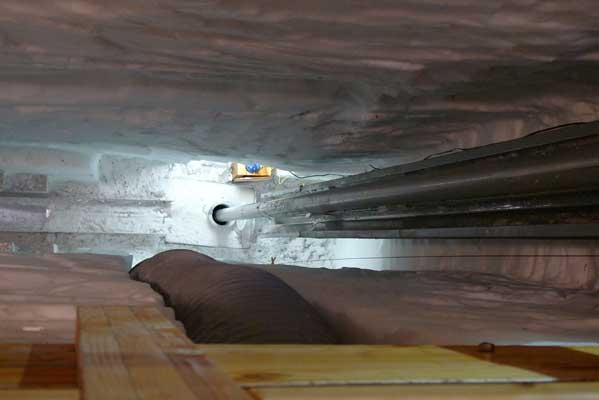
Expedition Strikes Ancient Bedrock Beneath Greenland Ice

After more than a year of drilling through ice in one of the harshest environments on earth, scientists in Greenland hit bedrock more than 8,300 feet (2,530 meters) below the surface of the Arctic island's vast ice sheet last week.
With this milestone, the group of researchers has sampled what it was after all along: very, very old ice. Specifically, ice from 115,000 to 330,000 years ago, a time known as the Eemian interglacial period, when the planet was about 5 degrees Fahrenheit (2.7 degrees Celsius) warmer than it is today.
The ancient ice cores they've brought up from the frozen deeps may offer valuable insights into how the world can change during periods of abrupt warming.
Greenland is covered by an ice sheet thousands of feet thick that built up over millennia as layers of snow and ice formed. The ice cores, cylinder-shaped rods of this ice, give scientists access to all the old, hidden layers, which contain information about atmospheric conditions that existed when they were originally formed, including how warm and moist the air was, and the concentrations of various greenhouse gases in Earth's atmosphere at the time.
While three previous Greenland ice cores drilled in the past 20 years covered the last ice age and the period of warming to the present, the deeper ice layers, representing the warm Eemian and the period of transition to the ice age were compressed and folded, making them difficult to interpret, said Jim White, U.S. lead investigator for The North Greenland Eemian Ice Drilling (NEEM) project, a collaboration helmed by the United States and Denmark, with scientists from 14 different countries.
The Eemian period ice cores should yield a host of information about conditions on Earth during that time of abrupt climate change, giving climate scientists valuable data about possible future conditions as our own climate changes.
After radar measurements taken through the ice sheet from above indicated that the Eemian ice layers below the NEEM site were thicker, more intact and likely contained more accurate and specific information than at other sites, researchers began setting up an extensive state-of-the-art research facility there. The team constructed a large dome, the drilling rig for extracting three-inch- (7.6-centimeter-) diameter ice cores, drilling trenches, laboratories and living quarters, and officially started drilling in June 2009.
Sign up for the Live Science daily newsletter now
Get the world’s most fascinating discoveries delivered straight to your inbox.
Simon Stephenson, Director of the Arctic Sciences Division at NSF, said NEEM's work "is important because the ability to measure gases and dust trapped in the ice at high resolution is likely to provide new insight into how the global climate changes naturally, and will help us constrain climate models used to predict the future."
Stephenson added that the NEEM ice cores will allow scientists to measure conditions in the past with more specificity — down to single years.
Accurate climate models based in part on the data collected at NEEM could play an important role in helping human civilization adapt to a changing climate. During the Eemian period, for example, the Greenland ice sheet was much smaller, and global sea levels were about 15 feet (4.5 meters) higher than they are today, a height that would swamp many major cities around the world.
Now that drilling is complete, scientists will continue to study the core samples and analyze other data they have collected.
- Images: Glaciers Before and After
- Big Chunk of Ice Falls Off Greenland Glacier
- Gallery: Polarstern Cruises the Polar Waters
This article was provided by OurAmazingPlanet, a sister site to LiveScience.










